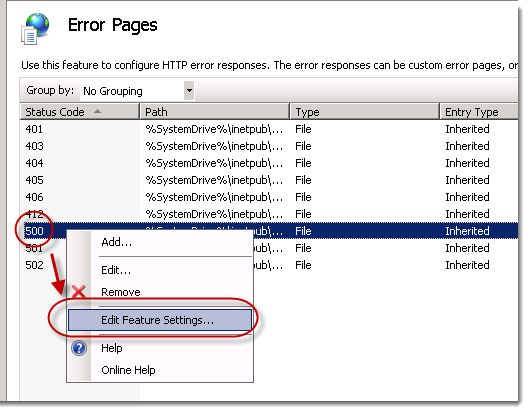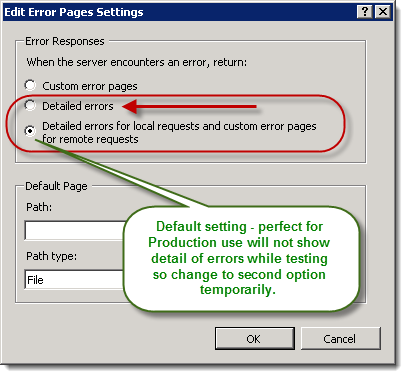⚠️ Problem Overview
Windows Server 2008 comes with IIS 7.5 which has many useful features but it can be tricky to get detailed error messages shown while debugging your web applications.
When you open your website in IIS Manager and double-click the ASP icon, you might try setting Send Errors To Browser to True expecting to see detailed error messages on the browser.
Unfortunately, this alone does not work on Server 2008. It may work on Windows 7 but Server editions have extra security protocols preventing detailed errors from showing by default.

🔧 Solution Steps
Step 1: Open IIS Manager
Open IIS Manager
Select your website from the list
Step 2: Go to Error Pages
In the main panel, double-click Error Pages
Step 3: Edit 500 Error Settings
Find the 500 error (Internal Server Error) in the list
Double-click on it to open Edit Feature Settings

Step 4: Enable Detailed Errors
In the popup window, select the option Detailed Errors
Click OK to save

Now IIS will show detailed error messages for the 500 error instead of the generic message.

🧩 Additional Tips
If you are using Internet Explorer, you might also need to disable its Show Friendly HTTP Error Messages option in the browser settings to see the full error details.
After you finish debugging your application, remember to disable detailed errors to avoid exposing sensitive information to users.
📌 Summary
By default, Server 2008 IIS7 blocks detailed error messages for security reasons. Enabling detailed errors requires:
Changing the Send Errors To Browser to True in ASP settings
Editing the Error Pages feature for the 500 error to Detailed Errors
This allows you to see full error details in the browser and debug your application effectively.
This little trick saved me a lot of time and frustration while developing on Server 2008. Hopefully, it helps you too.